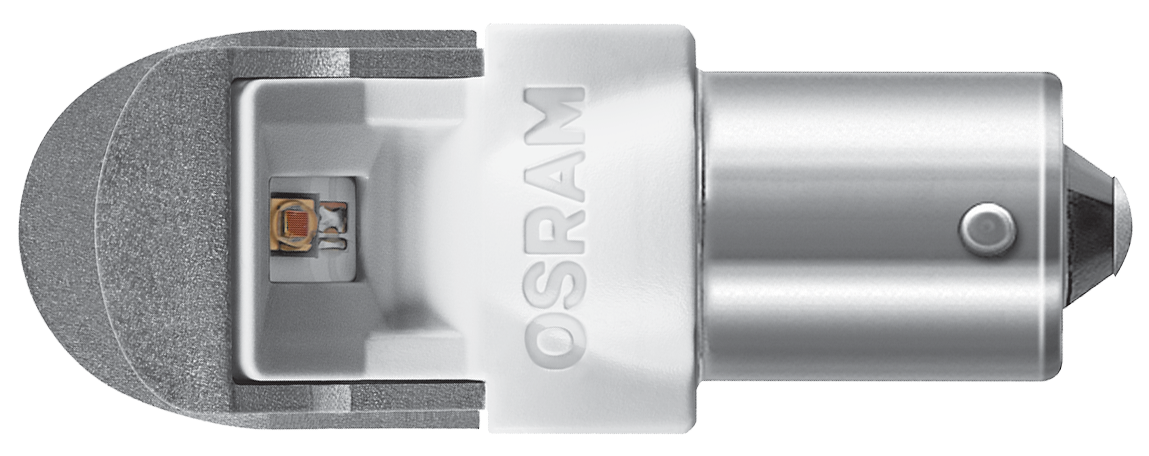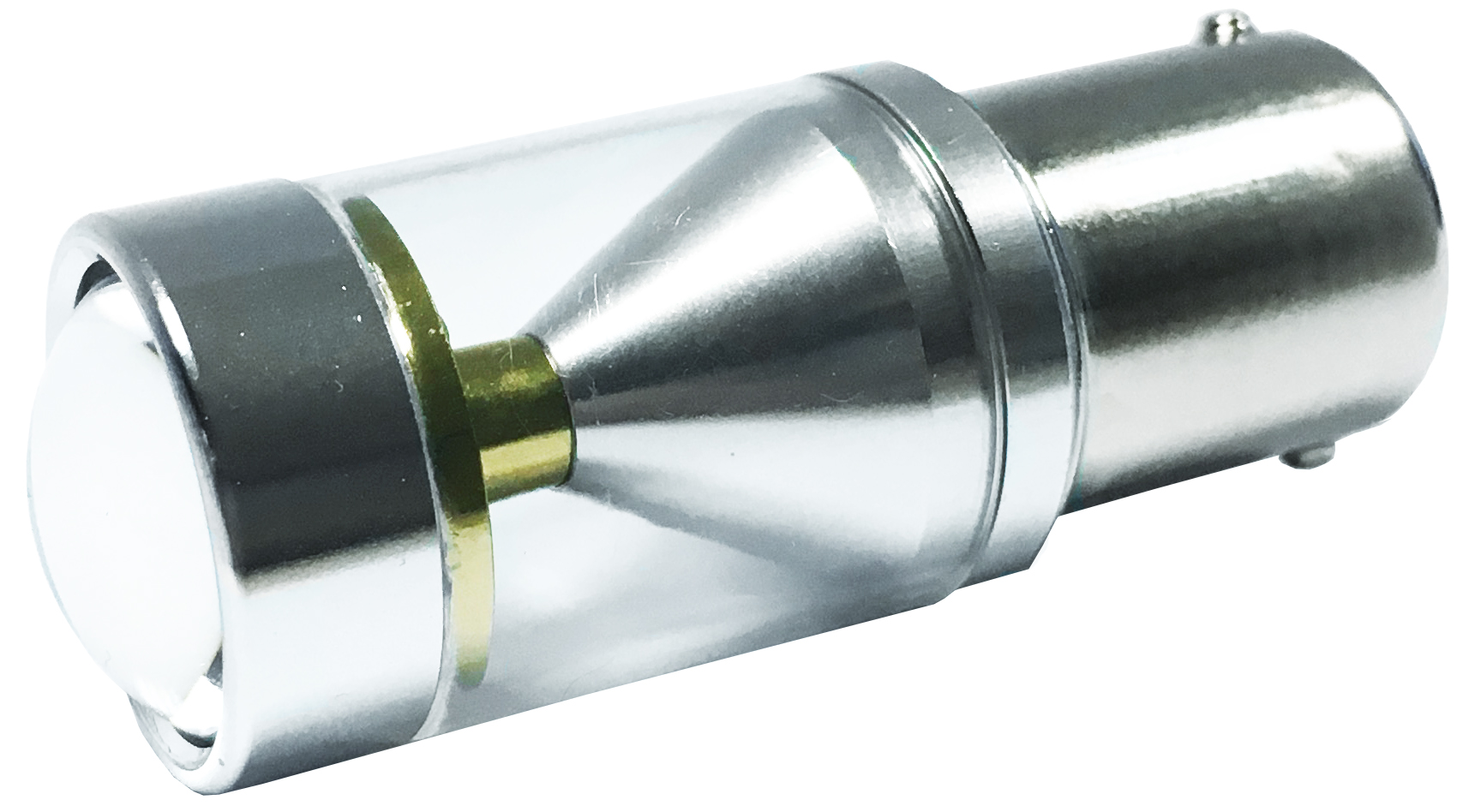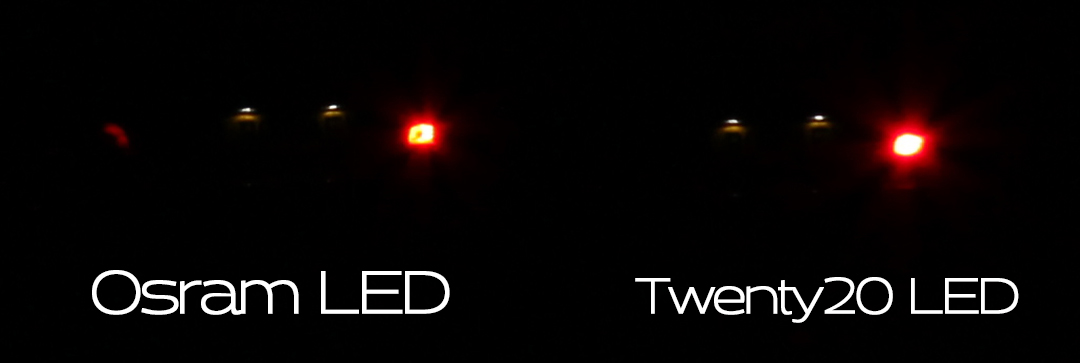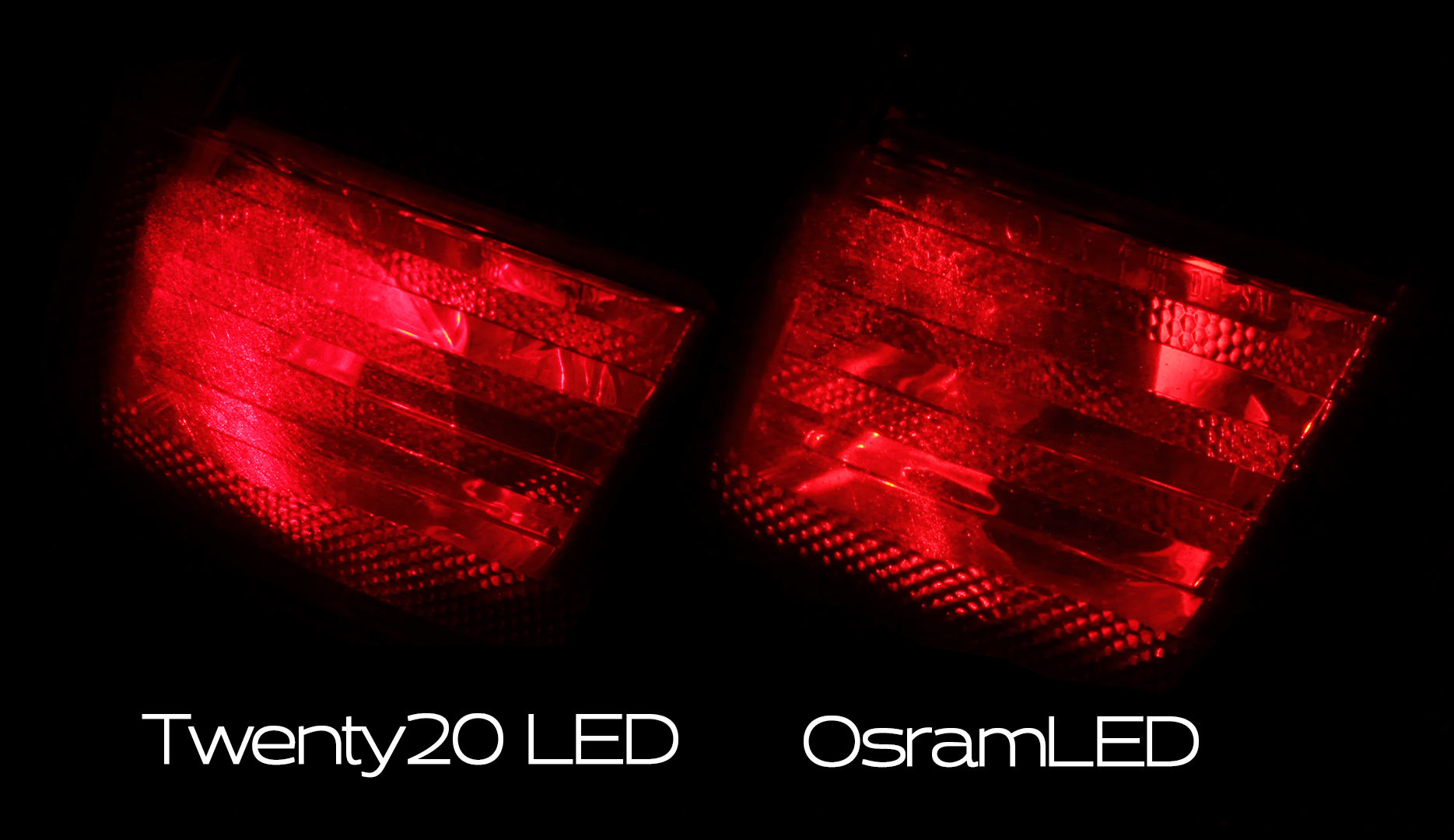The humble filament bulb is used in many vital lighting applications on vehicles and can be seen in most reverse, brake, tail & fog light bulbs. With the latest LED technology offering people a brighter, clearer and faster-acting replacement for these bulbs, we decided we would test the latest versions.
Most recently on offer is the Osram LED Long Life Retrofit. On first appearance it doesn’t look like a bulb at all, however, being made of thick plastic and metal it feels well made. With 1 small LED on each side, these bulbs draw just 2Ws compared to the filaments 21 but are easily brighter. Using “homogenous” technology Osram has aimed to replicate the original filament placement as much as possible. Osram is currently trying to get the EU to fully road approve these bulbs and from our tests we can’t see why they wouldn’t be approved.

On the other hand, our Twenty20 bulbs use Cree LEDs. Having a total of 6, 1W LEDs the Twenty20 bulbs are noticeably brighter when dry tested next to any other filament or LED bulb. They don’t solely rely on their power however. With 2 LEDS on top being focused by a projector lens, this is where most of the light comes from. The other 4 LEDs shine down at a reflective cone to utilise the cars’ housing.
For our tests, we decided to go with the rear fog light. For fog lights, it’s particularly important that they’re a clearly defined colour and a bright light. We used a brand new filament bulb and the red versions of the Osram and Cree LEDs for the best colour. We locked the settings on our camera with a slightly underexposed shot at around 5ft, 30ft and 80ft.
At 5ft the Osram’s extra colour and subtle brightness difference are nice and even. To our eyes, it looked like a nice subtle upgrade to the filament bulb, evenly lighting up the whole reflector. However, its lack of light on the top caused a black spot in the centre. At this distance, the Twenty20’s brightness is really noticeable. The camera struggled to focus because the light was so bright. If you just want to change the bulb and wow people then this is the way to go.

At 30ft the difference between the two reduced which is impressive considering the Osram LEDs have 1/3 of the power. However, the Cree LEDs are still very noticeably brighter. 
At the 80ft mark, the two become even closer. Despite not being 3x brighter the Cree LED still takes the crown. The photos tell the real difference.

Another difference between the designs is the effect they have on the light lens close up. The Osram LEDs have an even effect similar to the stock bulb, but with a more pleasing red to them. The Cree LEDs projector lens causes a “torch/flashlight” effect. This is where a circle of light gets shined on the inner lens. This is normally only noticeable from angles where you can’t see the light of the bulb but it’s still important to note. One major drawback of the Osram LEDs is that they don’t have any kind of Can-bus warning canceler. On the newer cars, they will cause a warning light on the dash and some cars will not even illuminate them. In this case we would recommend them for the older cars, however, testing them on the older cars reveals they don’t create much light. This is due to the older style light housing not using a reflector but instead refracting the light from the top of the filament bulb. The Osram bulbs give no light from the top, meaning the older cars are not compatible. Unless you can turn off your warning cancellers or own a newer car with no CAN-bus system the Osram LEDs are not for you. For us, this was the biggest drawback. The design is clever but the applications are limited.
One major drawback of the Osram LEDs is that they don’t have any kind of Can-bus warning canceler. On the newer cars, they will cause a warning light on the dash and some cars will not even illuminate them. In this case we would recommend them for the older cars, however, testing them on the older cars reveals they don’t create much light. This is due to the older style light housing not using a reflector but instead refracting the light from the top of the filament bulb. The Osram bulbs give no light from the top, meaning the older cars are not compatible. Unless you can turn off your warning cancellers or own a newer car with no CAN-bus system the Osram LEDs are not for you. For us, this was the biggest drawback. The design is clever but the applications are limited.
The advantages of the Osram bulbs are in their low power draw. Osram has managed to exceed a 21w bulb with the power of a dashboard bulb. They also claim an extremely long life with a 6 year guarantee. With these LEDs you could truly fit and forget, as long as your car doesn’t detect them. The Twenty20 LEDs on the other hand still have a very long life and a 3 year guarantee.
In the end, the Osrams are a good bulb if your car is compatible. They will last forever and are a subtle, but nice upgrade. If you want a bulb that will just swap straight in and massively improve the lighting of your car then you want the Twenty20 Cree LEDS.
Author: ABD.co.uk

Unfortunately, selling, fitting and using LED bulbs into a halogen housing on a road car is illegal in both the UK and EU (although not in some Asian countries). What you are seeing in your test is not necessarily a brighter bulb but excessive scatter – caused because the optics within the lamp cannot function as intended with the incompatible light source.
There is no way such a bulb would get full UK type approval anyway, one reason (among others) is that it wears a halogen base and an LED top.
Hi Rob, you are (in parts) correct in what you say. Aftermarket LED bulbs for external applications cannot carry an E mark due to them not being of the same type as the bulb they are replacing. As a result they are not road legal. However this is a technicality of rules put in place before technologies such as LED came into use. It is not a result of this technology producing “excessive scatter” or being “unable to function as intended”. The LED bulbs we sell are all superb bulbs for the applications they are intended for and in most cases actually improve the application. For example, LED bulbs in brake lights react faster than a standard filament bulb providing better reaction times for following vehicles.
In terms of your last sentence, there is actually advanced legislation going through as we speak to get retro fit LED bulbs (that conform to certain strict criteria) approved for road use, as it is widely understood that the “not road legal” technicality for this technology is largely a farce, as long as the retro fit LED bulbs are manufactured to the correct standards…watch this space!